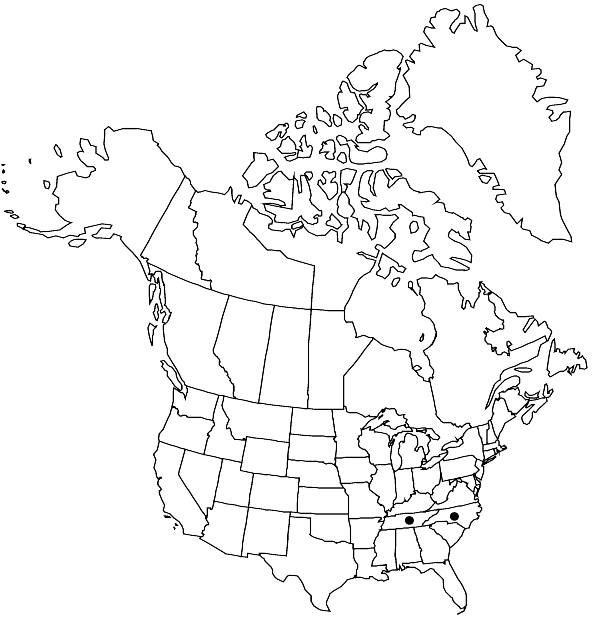Polytrichastrum appalachianum
Bryologist 95: 271. 1992,.
Plants moderately robust, dark-green to brown or almost blackish, generally in loose tufts. Stems 2–6.5 cm high, simple, often felted with whitish rhizoids. Leaves 5–10 mm, erect-spreading when dry, widely spreading and somewhat recurved when moist; sheath about 2 mm, hyaline-margined, the cells at the shoulders forming a differentiated hinge; blade lanceolate, acuminate, sharply serrate nearly to the sheath; costa short-excurrent, ending in a short, brownish or reddish-brown point; marginal lamina plane to erect, 2–8 (–20) cells wide; lamellae 18–50, crenulate in profile, 4–7 cells high, marginal cells in section narrow, pyriform, thickened at the narrowed apex, smooth; sheath cells rectangular, 4–6: 1; cells of marginal lamina 9–13 µm, rounded to subquadrate. Sexual condition dioicous; perichaetial leaves not much differentiated. Seta 3.5 cm. Capsule 4.5–5 mm, 4-angled; hypophysis cylindric but not sharply delimited; exothecial cells absent a central thin spot. Spores 11–13 µm.
Habitat: Thin soil over acidic rocks
Elevation: moderate elevations
Discussion
Polytrichastrum appalachianum is locally common on exposed mountain summits in the Blue Ridge and Great Smoky mountains, and was long misidentified as Polytrichum gracile. The marginal cells of the lamellae are pear-shaped in section and crenulate in profile, whereas in Polytrichum gracile and Polytrichastrum formosum the marginal cells are scarcely differentiated, and the lamellae in profile are entire or finely and distantly serrulate. This species was for a time confused with Polytrichum xanthopilum (Mitten) G. L. Smith, a Himalayan plant with similar lamellae, but a different capsule shape (see H. A. Crum and L. E. Anderson 1981). The capsule of Polytrichum xanthopilum has a broad annular constriction separating the hypophysis from the urn.
Selected References
None.
Lower Taxa
"broadened" is not a number."um" is not declared as a valid unit of measurement for this property."wide" is not a number.
